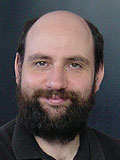|
|
|
<<< Previous speaker
|
next speaker >>>
|
Chief Scientist Martin Fowler, Loud-mouth on Object Design

Martin Fowler is an author, speaker, consultant and general loud-mouth on software development.
He concentrates on designing enterprise software - looking at what makes a good design and what practices are needed to come up with good design. He has pioneered object-oriented technology, refactoring, patterns, agile methodologies, domain modeling, the Unified Modeling Language (UML), and Extreme Programming.
He's the Chief Scientist at ThoughtWorks - an international application development company, and has written five books on software development: Analysis Patterns, UML Distilled (now in its 3rd edition), Refactoring, Planning Extreme Programming (with Kent Beck), and Patterns of Enterprise Application Architecture. I also write articles regularly on my site at Martin Fowler.
|
Presentation: "Agilists and Architects -- Allies not Adversaries"
Time:
Wednesday 09:10 - 10:00
Location:
Metropolitan Ballroom
Abstract: As Agile becomes more accepted as a software development methodology,
concerns from architecture groups are increasing. Enterprises have
legitimate concerns that are often addressed by architects.
However,the traditional ways that architects engage with development groups do
conflict with Agile methods. This talk describes the ways that Agile methods can benefit architects, addresses concerns architects express about agile, and finally proposes some ways that architects and agile development teams can become allies.
Training: "Domain Specific Languages"
Time:
Tuesday 09:00 - 16:00
Location:
City Room
Abstract:
Domain Specific Languages (DSLs) are an old technique in software
development that's getting a recent resurgence in interest. Most
developers run into them regularly - as XML
configuration files, regular expressions, query languages or build
scripts. However they haven't been given the attention they deserve and
there is very little information out there to help developers build them
effectively. We find that few people have done much to build their own
DSLs and even fewer have a broad appreciation of the various techniques
involved.
This tutorial is a step towards closing this gap. We'll begin by
introducing the three main categories of DSLs: External, Internal, and
Language Workbenches. We'll talk about the advantages of DSLs and the
problems in using them, so that you'll appreciate what the different
styles look like and when you might want to build them. In the second
part we'll go into more details on techniques of working with each of
the three styles, to get you started on your own work.
We are currently working to develop a coherent pedagogic framework (if
you'll forgive a pretentious name) for DSLs, this tutorial is an
opportunity to catch up with our work. However it does come with a
caveat: we are still very much in the middle of the process of capturing
and organizing this knowledge. As a result we won't be describing a
finished body of knowledge, but rather one that is still evolving.
|
 |
| |




